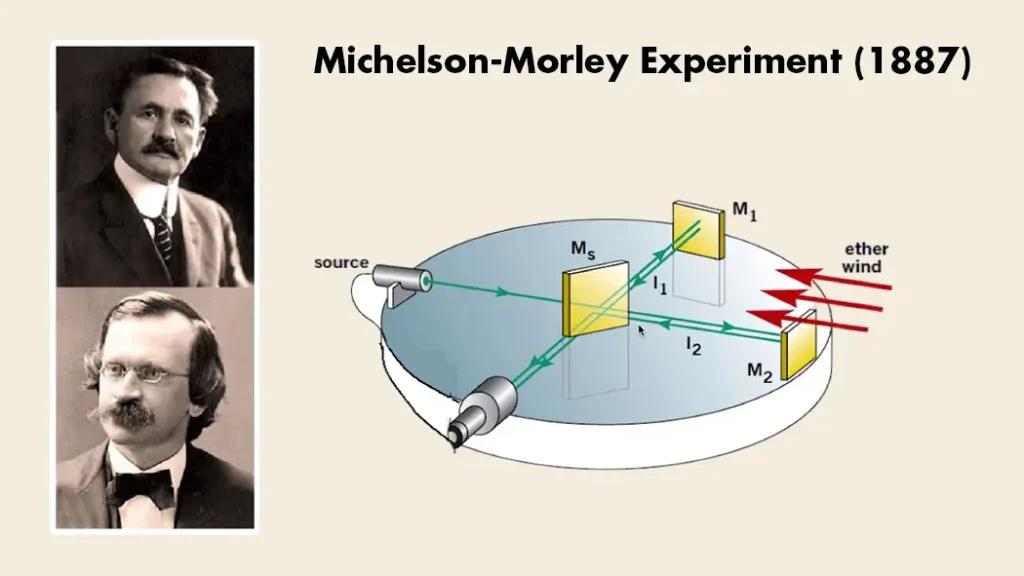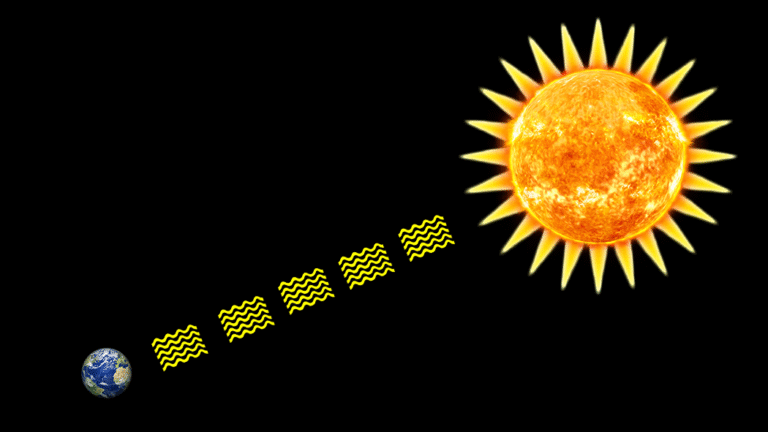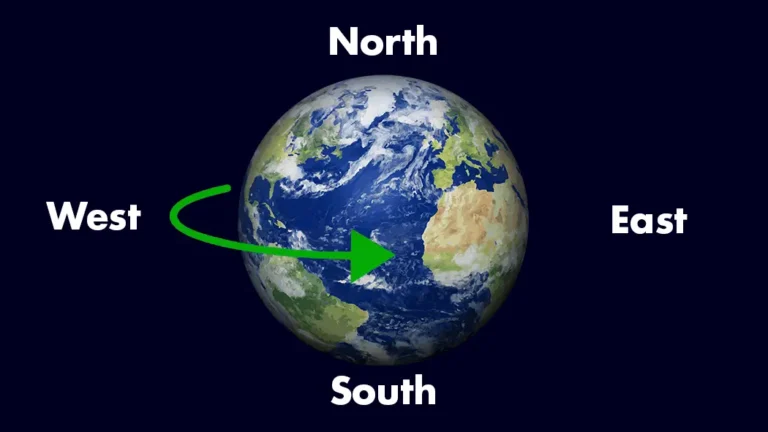The speed of light is one of the most important numbers in science. It tells us how fast light travels in a vacuum. This speed is about 299,792 kilometers per second or about 186,000 miles per second. Here’s the strange part. No matter how fast you are moving, the speed of light stays the same. It also stays the same no matter where you are watching from. That sounds weird, right? Why is the speed of light constant?
Let’s explore this idea in the simplest way.
Light Is Different
Most things in our world move differently depending on how we move. For example, imagine you’re in a car moving at 50 km/h. If you throw a ball forward at 10 km/h, someone standing outside would see the ball moving at 60 km/h. That makes sense. But with light, things don’t work like that.
Let’s say you shine a flashlight while riding in a fast spaceship. You’d think the light would move faster than normal. But it doesn’t. The light still travels at the same speed—299,792 km/s. Even if your spaceship is moving super fast, the light from your flashlight won’t go any faster.
That’s strange. But it’s true. And scientists have tested this over and over.
The Experiment That Changed Everything
Long ago, scientists thought light might behave like sound. Sound needs air to travel. Its speed depends on how fast you’re moving and how the air is moving. So they guessed maybe light needs something to move through too. They called it “ether.” They thought ether filled all of space.
But in 1887, two scientists—Albert Michelson and Edward Morley—ran an experiment. They wanted to find this “ether.” They expected to see light move at different speeds depending on Earth’s motion. But they didn’t. Light always moved at the same speed.
This was shocking. It meant two big things:
- Ether doesn’t exist and Light doesn’t need anything to travel through.
- Speed of light doesn’t depend on the observer’s motion.
This experiment helped change the way we think about space and time.

Einstein’s Big Idea
Later, in 1905, Albert Einstein came up with a new way to understand this. He called it the Theory of Special Relativity.

Einstein said something very bold. He said that the speed of light is the same for everyone. It doesn’t matter how fast they are moving. This wasn’t just a guess. It explained the results of earlier experiments. It also matched how the universe actually works.
But this idea had a strange result. If the speed of light is always the same, then something else must change to make that possible. That “something” is time and space.
Time and Space Can Stretch
In our everyday life, time feels steady. A second is always a second. But in space, that’s not true.
If you move very fast—close to the speed of light—time slows down for you. At the same time, space shrinks in the direction you’re moving. This makes the speed of light still come out the same. This is why the speed of light stays the same in all situations.
Here’s an example: imagine two spaceships. One is standing still. The other is flying very fast. Both shine a light beam. Even though one is moving fast, both light beams travel at the same speed.
How? Because time ticks slower in the moving ship, and space is shorter for it too. These changes cancel out any speed difference. The light still moves at 299,792 km/s for both ships.
Light Has No Mass
Another reason why light’s speed is special is because light has no mass. Most objects with mass need energy to speed up. The more they speed up, the more energy they need. At some point, it takes infinite energy to reach the speed of light. That means nothing with mass can go that fast.
But light is made of tiny particles called photons. Photons don’t have mass. That’s why they don’t need energy to keep moving at high speeds. They’re always moving at the speed of light. Not faster. Not slower.
Why Doesn’t Light Speed Up or Slow Down?
You might wonder, if light has no mass, why doesn’t it speed up or slow down? Why not move at a million kilometers per second instead of 299,792 km/s?
To understand this, we need to talk about what light is.
Light is a form of energy. It moves like a wave, but it also acts like a particle. These tiny particles are called photons.
Photons have no mass. This is very important. Because they have no mass, they must always move at the same speed. They cannot slow down. And they cannot speed up.
If something has no mass, it cannot stay still. It must always move. And it moves at the speed of light.
So, light doesn’t speed up or slow down. It always travels at the one speed that nature allows for massless particles.
The speed of light isn’t just a random number. It is built into the way the universe works. It shows up in many formulas in science, like Einstein’s famous equation: E = mc².
In this equation, “c” stands for the speed of light. It shows that energy and mass are linked by this constant speed. If the speed of light changed, the whole universe would behave differently. Atoms might not hold together. Stars might not shine. Life might not exist.
So in a way, the speed of light is the speed limit of the universe. It keeps everything in order. That’s why light doesn’t speed up or slow down—and that’s why the speed of light is constant.
Testing the Speed of Light
Scientists have measured the speed of light in many ways. Every time, they get the same answer.
They have used lasers, mirrors, and atomic clocks. They have done this on Earth and in space. The results are always the same.
No matter the motion of the source, or the observer, light keeps its speed.
Why Does Nature Work This Way?
This is the big question. Why is the speed of light constant?
The truth is, we don’t know why. We just know it is.
This is how nature behaves. The laws of physics are written with this rule. Light moves in this way. And everything else follows from it.
Many people find this hard to accept. We are used to things changing speeds. Cars go faster. People walk slower. But light is not like that. It follows a different set of rules.
Speed of Light Changes in Materials
You might have heard that light slows down in water or glass. That’s true. But it’s not breaking the rules. The speed of light in a vacuum is always the same. But when light enters a material, it interacts with the atoms inside.
Light still moves forward, but it keeps bumping into particles. These tiny delays make it look like light is slower. Once it leaves the material, it returns to its normal speed.
So yes, light can look slower in some places. But the real, constant speed is always in a vacuum—where there’s nothing in the way.
Does the Speed of Light in a Vacuum Ever Change?
As far as we know, it doesn’t. Scientists have checked this many times. They’ve looked at light from faraway stars and galaxies. Some of that light is billions of years old. And it still moves at the same speed.
Some people have wondered if the speed of light was different in the early universe. That’s still a topic scientists explore. But no strong proof has been found so far.
So right now, we believe that the speed of light has always been constant.
Why Is This Important?
Understanding light’s speed helps us in many ways. It lets us measure distances in space. For example, light from the Moon takes just over a second to reach us. Light from the Sun takes about 8 minutes and 20 seconds. Light from the next star takes over 4 years!
We call these distances light-years. A light-year is how far light travels in one year.
Also, tools like GPS systems work because they use signals that move at the speed of light. If we didn’t know this speed, we couldn’t find our way using phones or cars.
Even science fiction, like time travel or warp speed, is based on ideas about the speed of light. To dream big, we need to understand how light works.
Key Takeaways
Here’s a quick summary to help you remember:
- The speed of light in a vacuum is always 299,792 km/s.
- It stays the same for all observers, no matter how fast they’re moving.
- Light doesn’t need a medium to travel. It moves through empty space.
- Light has no mass, so it naturally travels at the speed of light.
- Space and time adjust to keep light’s speed constant.
- Light only appears slower in materials because of atomic interactions.
- This rule is built into the structure of the universe.
Final Thoughts
So, why is the speed of light constant? Because it’s part of how space and time work. It’s not just a number—it’s a rule that keeps the universe in balance.
Light doesn’t need anything to travel through. It has no mass. And it follows the same rules no matter who’s watching.
That’s what makes light so special. It moves the same way for everyone, everywhere, every time.
And even though that might sound strange, it’s one of the most beautiful truths in science.




